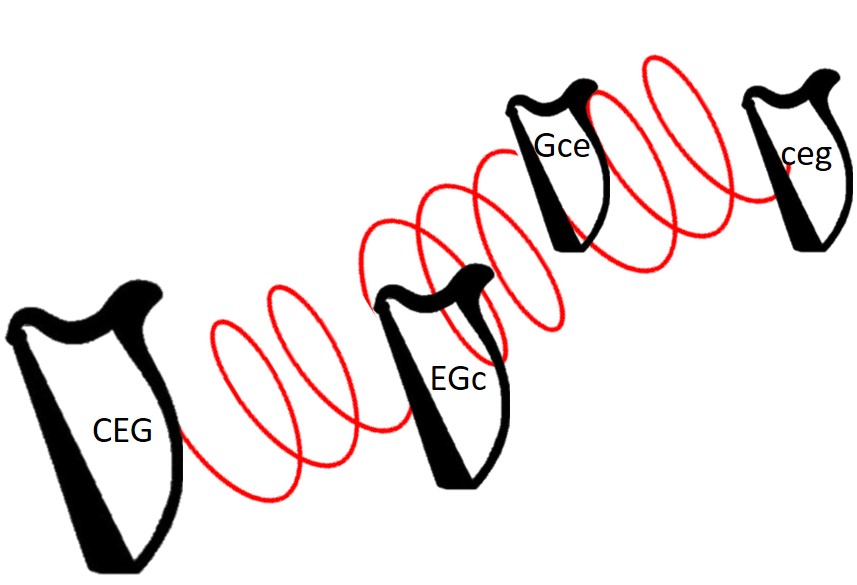When you learn a new tune, there is a lot to learn and to remember. You are trying to keep a lot in mind as you play – what are the notes of the melody? What are the needed dynamics? What about the phrasing? And then there’s the accompaniment and harmonization!
You may recall that I am a big advocate for laziness and efficiency. To that end, I try very hard to reduce the amount of stuff I have to learn, memorize, recall, and reproduce. So it becomes essential to create a set of tools that allow you to wring the most playing and performance time out of each tune you learn.
One of my favorite tools is to stick to a basic chord progression – with a twist! What is the twist? Inversions!
Not sure what an inversion is? It sounds complicated, but inversions are only a twist on a chord. And with a little bit of practice, inversions can become second nature.
How do you play inversions? Here’s an easy tutorial:
- Place a root position C major chord*. [Lost? The root position is the 1 – 3 – 5 chord with the scale name on the bottom (in our example here it is a C – E – G chord). This is the Root.]
- Now, twist that C off the bottom of the chord and place it on the top (so now you have a chord in the shape E – G – c) – that’s the first inversion.
- To move to the second inversion, take that E off the bottom and twist it to the top (so now you have a chord in the shape G – c – e) – that’s the second inversion!
- And, you guessed it, one more twist and you’re back to the root chord, just up an octave!
As you play along (I know you rushed right over to your harp while you were reading!) you can hear that, while the chord is the same, each inversion is also different. These differences meant that the inversions each give the tune a slightly different character!
Work on your inversions – practice them so they become second nature – and use them make subtle (but easy to remember) variations to your harmonies for the tunes in your repertoire and watch your repetitions become more interesting!
*I’m using the C major chord here but this applies to chords in any key – once you learn to do them, you can use them all over the place!

